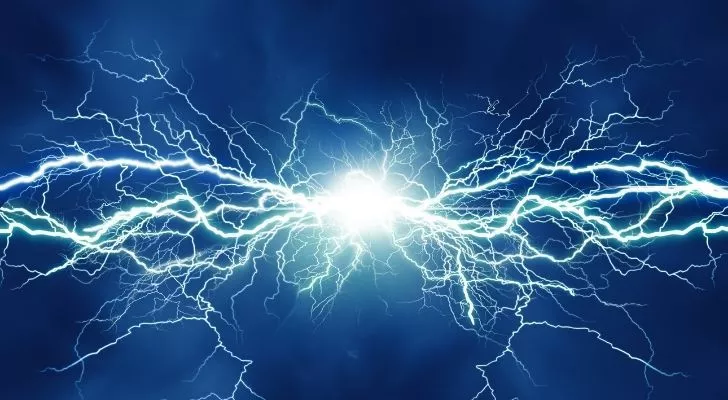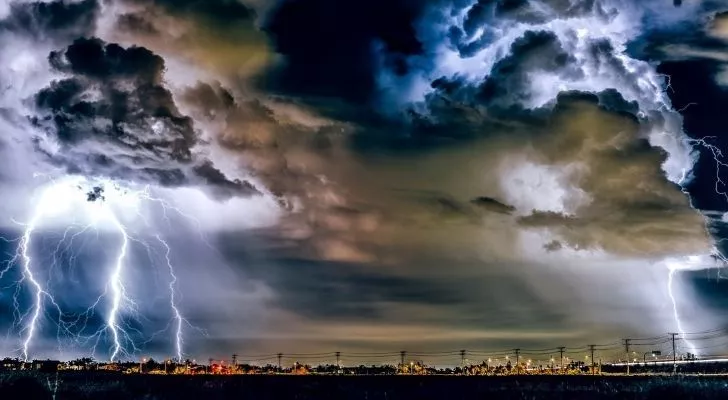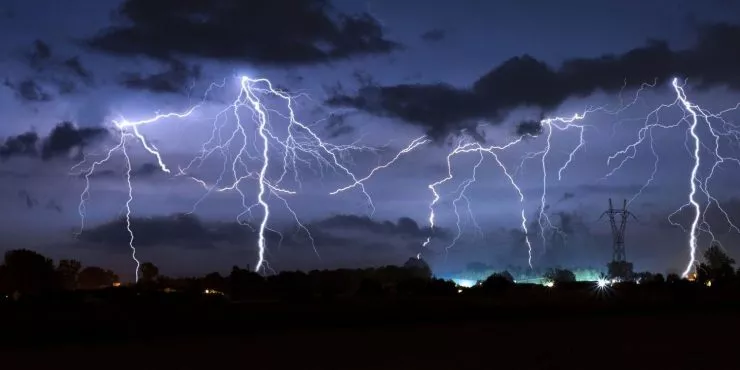Both thunder and lightning are incredible acts of nature that occur across the globe.
The loud boom of thunder and the striking light produced by lightning can be seen now and again in our skies when we experience a storm.
In this article, we will look at what thunder and lighting are and what their causes are.
What causes thunderstorms?

A thunderstorm occurs when there is an unstable atmosphere and where cold air meets hot air.
The hot air rises, and as it reaches the colder air, it forms water droplets. This process is called convection.
Sometimes these water droplets can freeze while moving around.
The updraft of hot air can be so quick that it forms cumulonimbus clouds.
Cumulonimbus clouds, more commonly known as thunderstorm clouds, are the only types of clouds that can cause hail, thunder, and lighting.
A thunderstorm is when a cumulonimbus cloud builds up too much energy.
This happens when all the frozen water particles move around the cloud at high speed and bump into each other. These collisions create an electrical charge.
Once the electrical charge has built up in the cloud, the positive protons form at the top of the cloud, and the negative protons gather at the bottom.
The buildup becomes positively charged and needs to be released, causing a thunderstorm.
What is lightning?

Lightning is the bright flash of light or electricity that is caused by a thunderstorm.
When protons have built up in the cloud, they attract oppositely charged protons around them.
This means that positively charged particles on the ground below will attract the negatively charged particles on the bottom of the cloud.
The negatively charged particles from the cloud will be attracted to any positively charged particles close by so in things such as mountains, people, or trees.
The charge coming from these ground points will eventually meet the negative particles in the cloud, which causes lightning to strike.
This is the same as when you experience a static shock.
Lightning is the electrical surge created between the cloud and earth, and lightning is the result.
What is thunder?

Thunder is the sound of the lightning bolt.
The rumble that we call thunder is the sound of the vibrations created by the lightning.
When the charge happens, it vibrates particles as it moves.
Because lightning is such a large discharge of energy, the vibrations it causes are massive.
Lightning bolts are also very hot, and this immediate heat causes air particles to expand, which creates more force.
These vibrations travel as sound waves to our ears, and we hear a rumble as a result.
If you are close enough to a lightning strike, you might hear a crack or whip noise.
We hear a more crisp sound when closer because the sound waves of the lighting vibrations have not become distorted by bouncing off surrounding objects.
Why don’t we hear thunder at the same time as seeing lightning?

The main reason for not hearing thunder at the same time as seeing lightning is that sound waves travel slower than light.
Light waves travel at a faster speed, so we will see the flash before we hear the rumble.
There is a myth that if you count the time between seeing the flash and hearing the rumble, you can tell how far away the storm is.
However, this has been proven not to be an accurate way of measuring the distance between yourself and the storm.
This technique can be used to estimate distance but with a little more math than just counting.
Where do the most amount of thunder and lightning storms occur?

The places that experience the most thunderstorms on earth lie on the equator.
This is due to the climate along the equator as it is hot and humid.
For this reason, it is very uncommon to experience a thunderstorm at both the North and South Poles.
The equator is known as being the most static place on earth, and it produces some of the most spectacular lightning shows.
The Democratic Republic of the Congo in Central Africa was known as the thunderstorm capital.
The mountain village of Kifuka in DR Congo experiences an average of 158 lightning flashes per 247 acres (square kilometer) each year.
Other locations to experience high levels of thunderstorms are Venezuela and India.
NASA research showed that in east India, the Brahmaputra Valley experienced the highest amount of lighting per month between April and May, which is during their annual monsoon.
Where is the thunder capital of the world?

Although many places along with the equator experience high volumes of thunder and lightning, there is one place like no other.
Lake Maracaibo in Venezuela has an average of 250 lightning flashes per 247 acres (square kilometer) each year.
The natural phenomenon is known as Catatumbo lightning or the Beacon of Maracaibo.
The point is where Lake Maracaibo meets the Catatumbo River, and there are around 260 storm days every year.
Lake Maracaibo holds the Guinness World Record for having the highest concentration of lightning.
In October, it is possible to see up to 28 lightning flashes each minute at Lake Maracaibo.
Thunder and lightning are natural wonders that occur mostly in humid climates; however, they can be experienced almost everywhere in the world.
Lightning is the static shock from a buildup of tension in the atmosphere, and thunder is the booming sound made when the lightning crashes.








